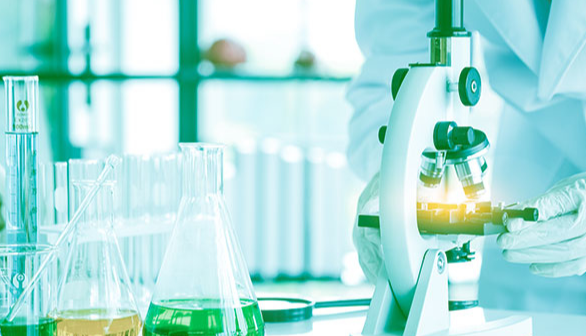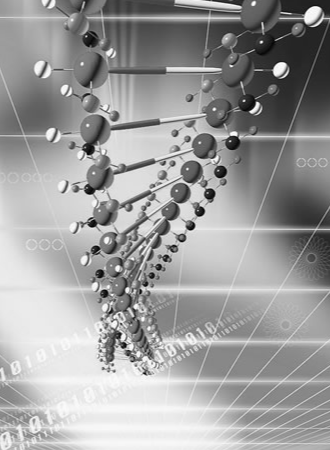Let high school students appreciate the beauty of life science
1 Show the mysterious beauty of life phenomenon
In the world of life, there are countless interesting stories and endless mysteries to explore. Teachers must have a far-reaching vision to select, screen and integrate the complicated life phenomena, fully tap the inherent charm and deep value of various resources, and consciously create situations that are in step with the changes in students' psychological needs. Touch the heartstrings of students, let students deeply feel "life is wonderful", induce learning interest, and promote their more active, more in-depth thinking.
For example, why "what you sow, what you reap"? The inheritance of life is the most complex, the most vast, the most difficult to understand, and the temptation of human tireless to explore the profound topic. For more than 100 years, from Mendel's pea experiment, to the transformation experiment of Diplococcus pneumoniae, to the infection experiment of T2 phage, to Morgan's fruit fly experiment, when people found that DNA is the main genetic material of organisms, genes are the basic unit of biological heredity, it is how happy! After the establishment of Watson and Crick's double-helix structure model of DNA molecules, the establishment of 64 genetic codons, and the implementation of the HGP program, people further realized that the location and function of genes are difficult to determine, and the complex structure and function of organisms are not only determined by genes. Is also determined by the existence of a large number of non-coding information and non-coding genes in the genome, where is the sunflower book of genetic language?

When teaching stem cells, I told the children the story of the Berlin Patient. Timothy Ray Brown, an American leukemia patient who also had AIDS, was almost on the verge of death. In 2007, he traveled to Berlin, Germany, and found Dr. Huth, who immediately made a decision: a bone marrow stem cell transplant to treat leukemia first. Unexpectedly, the transplant not only cured the leukemia known as the "Berlin patient", but also cured his AIDS inadvertently, denying the cruel reality that AIDS cannot be cured. Is this a rare case or is it common? Is it replicable or impossible to reproduce? What is the reason? At this time the class is silent, the students' eyes are bright!
There are also many questions: Why are small cell structures, even prokaryotic cells, so difficult to imitate artificially? What causes photosynthetic carbon assimilation in higher plants to have C3, C4 and sedum metabolism pathways? Is it true that language centers exist only in the human cerebral cortex? Do other animals have languages that humans can't see or understand? Is Darwin's theory of natural selection outdated? What explains the Cambrian explosion? The higher the evolutionary status of the organism, the more adaptive... I tell my students that the endless mysteries of the life sciences cannot be fully explained now, leaving you to straighten these question marks into exclamation points in the future.
When students' interest and enthusiasm for the mysteries of life are transformed into permanent interests and aspirations, the seeds of science are quietly planted, and it is likely to sprout, grow, blossom and bear fruit when students construct their future lives.
2. Show the harmonious beauty of life theory
Science is the reflection of law, and law is the core of beauty. For organisms, this law is unity, adaptation, competition, and evolution. In a sense, the law of life phenomena is connected with beauty.
For example, photosynthesis provides the material basis for the survival and development of humans and the entire living world, and is the most important biochemical reaction on Earth. When teaching the "photosynthesis" of plants, I specially picked more than a dozen leafy branches of different plants from the biological garden and geographical garden of the school for students to observe carefully. Whether the arrangement of leaves on the stem is alternate, opposite or whorled, they do not block each other from top to bottom, forming a Mosaic arrangement, so that each leaf can receive sufficient sunlight, and each is beautiful. beauty represents itself with diversity and integrity. The students were amazed by this naturally formed Mosaic of leaves and its rationality, and deeply felt that the survival of organisms and the continuation of the race were inseparable from the environment, and the survival of the fittest would otherwise be eliminated by nature.
For example, in 1894 Fischer proposed the lockkey theory of enzyme action, a key corresponds to a lock. This theory has many implications for our understanding of biological characteristics. In high school biology alone, there are as many as six or seven specific combinations involving "lock and key", such as: membrane carriers and transporters, hormones and target cells, antigens and antibodies, tRNA and mRNA, mutualism, etc., everywhere. It is this law of specificity, similar to the "lock and key theory", that makes life activities more orderly and efficient. Take the three basic laws of heredity as an example, from the separation behavior entry of a pair of alleles in the formation of gametes, to the free combination behavior deduction of non-alleles on two or more pairs of non-homologous chromosomes, and then to the linkage behavior supplement of different genes on the same chromosome, layer by layer, from shallow to deep, integrated!

It is a pity that Morgan's Law of chain exchange is not explained in the current textbooks. First, the content of the third law is not complicated and easy for students to understand. Second, it shattered a nearly perfect theoretical system. Fortunately, almost all biology teachers will not ignore the third Law, the harmonious theoretical system has an irresistible charm! Even a small cell is a unified living system, with a modest karyotoplasmic ratio, exquisite coordination of various organelles (such as the formation of secreted proteins), ways of expanding the area of biochemical reactions (such as the cristae of mitochondria and the grana of chloroplasts)... The high degree of harmony they achieve in the movement of contradictions is amazing!
When learning "ecological engineering", the course standard requires students to grasp the knowledge goal is to understand the basic principles of ecological engineering. If students are allowed to swallow these principles all at once, it will inevitably cause "indigestion", and the examples given in the textbooks are not only far from the SAR students' geographical location, but also far from their cognition. Therefore, I took the opportunity of comprehensive practical activities carried out by the school to lead the students to Guangming Farm, which is a national agricultural high-tech park, and let the students personally investigate the original and time-honored mulberry based fish pond in the Pearl River Delta region, so as to deeply explore the efficient and harmonious artificial ecosystem of mulberry planting, mulberry leaf rearing, cocoon reeling, silkworm sand, silkworm pupa, fish breeding with silk reeling wastewater and fish manure mulberry. Feel the brilliance and creativity of our working people. In the mulberry field to collect mulberry weeding, in the fish pond spread feed, before leaving, also brought back some of the farm ant silkworm to learn silkworm rearing. The enthusiasm and activity of the students was beyond my expectation!
3. Explain the relevance of biological thinking
Thinking is the most concentrated manifestation of wisdom.
Throughout the history of life science development, new views and theories, new ideas and methods, new discoveries and creations, almost every major breakthrough is accompanied by new thinking. Peas and fruit flies were well suited for genetic experiments, Engelman explored the use of a brilliant combination of water and aerobic bacteria in photosynthesis, echoes of the classic ideas of Avery, Hershey and Chase, evolution, the theory of the cell, the discovery of enzymes, and the nature of hormones. The mobile Mosaic model of cell membrane and the bold creation of the double helix structure model of DNA molecules, these epoch-making great achievements, all show the great power of perfect thinking! On the contrary, Waltheimer's ingenuity in exploring the source of pancreatin and Helmont's experiment in exploring the source of willow weight gain failed, and it was not because of wrong thinking! It can be seen that the appropriateness of biological thinking plays a decisive role.
Teaching "The structure of DNA" is after teaching the classic experiment that proves "DNA is the main genetic material of living things", I ask the students to think about such a question: from the analysis of DNA structure, why did nature choose DNA as the genetic material? What is the suitability of DNA as genetic material?

I guided the students to analyze the characteristics of the molecular structure of DNA: Although the chemical composition of DNA is only four deoxynucleotides, due to the huge size of the molecule, there are various ways of arrangement and combination, storing a large amount of genetic information, reflecting the diversity of genetic material; A particular DNA has its specific deoxynucleotide sequence, indicating the specificity of genetic material; In the DNA molecule, the "stair handrail" frame of alternating phosphate and deoxyribose is very stable, and the hydrogen bond accumulation of the "stair step" between A and T, C and G is also very strong, which is not easy to open, showing the stability of genetic material. The double helix structure can replicate itself precisely, so that genetic continuity can be maintained between parents and offspring. DNA controls metabolic processes and character development through gene expression; Mutations can occur under certain conditions, and after mutations can continue to replicate, producing heritable variations. In contrast, RNA and protein, the former has small molecular weight, little genetic information, most of them are single strand, the structure is unstable; The latter is not self-replicating, is not molecularly stable, and cannot be passed on to future generations. Therefore, neither is suitable as genetic material. Such biological thinking that increases one percent and decreases one percent is too short makes people fall in love.
Harvard University students once said that biology is the most difficult to learn, because although there are certain laws of life activities, their laws are not as obvious and fixed as the laws of mathematics, physics and chemistry, which requires students to have a very flexible thinking when learning this course, and they must be able to see the overall situation. With the view of system, the view of universal connection, the view of movement development, the view of unity of opposites and so on to view and analyze the various forms of life.
Therefore, in teaching, teachers must try every means to cultivate students' biological thinking, or disciplinary thinking, so that each class, each assignment and each practice in biology are not repeated mechanical exercises, but careful, logical, critical, exploratory and creative thinking activities, so that students can appreciate the charm and significance of disciplinary thinking.
4 Introduce the innovative beauty of life transformation
After entering the 21st century, the achievements of life science and technology are profoundly changing people's mode of production, way of life and way of thinking, and opening up a magnificent picture of life for us in an unprecedented manner. Teachers should show students this magnificent picture of life transformation.
Golden rice rich in carotene, E. coli that can produce human insulin, street trees implanted with the luminous gene of jellyfish to replace street lights... Highly attractive genetic engineering and protein engineering, according to people's expectations, purposefully transform life or even redesign life, creating improved species with certain characteristics that do not exist in nature and are expected by human beings, and its magical power has threatened the traditional concept that distant species can not freely mate for thousands of years. Obtaining crops, poultry and livestock with high yield, stable yield and good quality, breast or bladder biogenerators, genetic diagnosis and treatment, and "superbacteria" that decompose various components of petroleum show a bright future for human society.
In a special review of the history of biological sciences in senior three, I asked the students to list the achievements of Chinese people in the field of life sciences. As a result, few students could list more than three. So, I slowly began to learn:
In 1965, after more than six years of unremitting efforts, Chinese scientists artificially synthesized crystalline bovine insulin with all biological activities, which was the first artificially synthesized protein in the world and opened the era of artificial synthetic biological macromolecules.

In 1981, it synthesized yeast alanine transfer ribonucleic acid (yeast alanine tRNA), the first synthetic nucleic acid molecule in the world.
In 1988, Chinese scientists synthesized a gene against cucumber Mosaic virus, and introduced this gene into the cells of tobacco and other crops, and obtained a new crop strain with strong antiviral ability.
In 1989, Chinese scientists successfully introduced a human growth hormone gene into the fertilized eggs of common carp and bred a genetically modified carp.
In 1992, China's hepatitis B vaccine developed by bioengineering was put on the market, playing an important role in the prevention of hepatitis B.
In 1993, Yuan Longping's two-line hybrid rice began large-scale trial planting. Compared with the original commonly cultivated three-line hybrid rice, the average increase of 15% per hectare was enough to feed the entire Australian population in one year.
In 1995, Chinese scientists introduced the insecticidal protein gene of Bacillus thuringiensis into cotton, and cultivated a new cotton strain with obvious anti-bollworm effect, making China one of the two countries in the world that independently developed insect-resistant cotton (the other is the United States)...
At this time, students concentrate on, as a Chinese pride, sense of honor, sense of mission in the bottom of my heart, these life transformation may become an "irresistible temptation", long-term imprint in the minds of students, for their tomorrow to add wings to take off!
5 Eulogize the sublime beauty of the scientific spirit
In their life, while writing scientific chapters, many biologists everywhere carry forward human values and ideals, and tirelessly pursue social progress and harmony. Their independent thinking, courage to doubt, courage to innovate, perseverance, truth seeking and pragmatism, as well as their valuable cooperation, fraternity and tolerance in work and life, are themselves models of the combination of scientific spirit and humanistic spirit.
The development of life science deeply contains the humanist attitude and spirit of scientists, which are inseparable from biological knowledge and constitute an indispensable teaching content of high school biology curriculum.

I told my students that the naturalist Lamarck, who had always been poor, struggled all his life to find the truth, never stopped writing, and in his old age he was poor and ill, and his daughter borrowed money for his burial after his death.
I tell my students that Mendel, known as the "father of modern genetics," used eight years of pea experiments to reveal the basic laws of biological inheritance, but Mendel's discovery of genetic laws was not taken into account at the time, and his paper was only published in a local journal. A century later, three scientists who had prepared their papers without knowing what Mendel had done that year accidentally came across Mendel's article and immediately gave him the credit.
I told my students that the world-renowned "founder" of microbiology in the Netherlands, Leeuwenhoek, only has a junior high school education, but it took 60 years to grind more than 400 raised lenses, self-made microscopes and observe the world under the microscope, known as "grinding a mirror in a lifetime", and for the first time saw living cells under the microscope, saw microbes...
I hope that as Professor Zhu Xiaoman said: truly excellent teachers can naturally impart knowledge while letting students hear the moral voice behind knowledge.
Qian Xuesen, a famous scientist in China, strongly advocates that scientists should know aesthetics, which is beneficial to their own scientific research. We can hardly imagine that a "beautiful" science teacher will bring out a group of "beautiful" science students, and it is difficult to imagine that a "beautiful" science student will come out of the "beautiful" science student group.
- EMERSON
- Honeywell
- CTI
- Rolls-Royce
- General Electric
- Woodward
- Yaskawa
- xYCOM
- Motorola
- Siemens
- Rockwell
- ABB
- B&R
- HIMA
- Construction site
- electricity
- Automobile market
- PLC
- DCS
- Motor drivers
- VSD
- Implications
- cement
- CO2
- CEM
- methane
- Artificial intelligence
- Titanic
- Solar energy
- Hydrogen fuel cell
- Hydrogen and fuel cells
- Hydrogen and oxygen fuel cells
- tyre
- Chemical fiber
- dynamo
- corpuscle
- Pulp and paper
- printing
- fossil
- FANUC
- Food and beverage
- Life science
- Sewage treatment
- Personal care
- electricity
- boats
- infrastructure
- Automobile industry
- metallurgy
- Nuclear power generation
- Geothermal power generation
- Water and wastewater
- Infrastructure construction
- Mine hazard
- steel
- papermaking
- Natural gas industry
- Infrastructure construction
- Power and energy
- Rubber and plastic
- Renewable energy
- pharmacy
- mining
- Plastic industry
- Schneider
- Kongsberg
- NI
- Wind energy
- International petroleum
- International new energy network
- gas
- WATLOW
- ProSoft
- SEW
- wind
- ADVANCED
- Reliance
- YOKOGAWA
- TRICONEX
- FOXBORO
- METSO
- MAN
- Advantest
- ADVANCED
- ALSTOM
- Control Wave
- AB
- AMAT
- STUDER
- KONGSBERG
- MOTOROLA
- DANAHER MOTION
- Bently
- Galil
- EATON
- MOLEX
- Triconex
- DEIF
- B&W
- ZYGO
- Aerotech
- DANFOSS
- KOLLMORGEN
- Beijer
- Endress+Hauser
- MOOG
- KB
- Moxa
- Rexroth
- YAMAHA
- Johnson
- Westinghouse
- WAGO
- TOSHIBA
- TEKTRONIX


Email:wang@kongjiangauto.com



































































































































